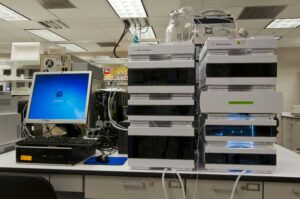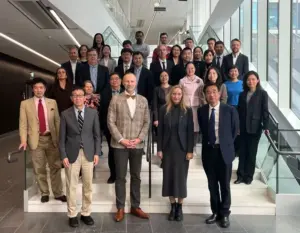
In a groundbreaking study, researchers at the Texas A&M University Health Science Center have unveiled a novel strategy to combat a rare and aggressive form of kidney cancer. By disrupting the formation of molecular “droplet hubs” within cancer cells, the team has managed to halt tumor growth, offering new hope for patients with limited treatment options.
The study, published in Nature Communications, reveals how RNA, traditionally seen as a mere messenger, is co-opted to create liquid-like hubs in the nucleus of cells affected by translocation renal cell carcinoma (tRCC). These hubs act as command centers, activating genes that promote cancer growth. The researchers have developed a molecular switch capable of dissolving these hubs, effectively cutting off the cancer’s growth at its source.
RNA’s New Role in Cancer Progression
Translocation renal cell carcinoma is a formidable adversary, primarily affecting children and young adults. It is driven by TFE3 oncofusions, hybrid genes resulting from chromosomal misalignments. Until now, the mechanisms by which these fusion proteins fueled aggressive tumor growth were unclear.
According to the Texas A&M team, these fusions recruit RNA as structural scaffolds. Instead of serving as passive messengers, RNAs actively assemble into droplets, known as condensates, which cluster essential molecules together. These droplets transform into transcriptional hubs, hotspots that activate cancer-promoting genes.
“RNA itself is not just a passive messenger, but an active player that helps build these condensates,” said Yun Huang, PhD, professor at the Texas A&M Health Institute of Biosciences and Technology and senior author.
The study also identifies an RNA-binding protein, PSPC1, as a critical stabilizer, reinforcing the droplets and enhancing their capacity to drive tumor growth.
Decoding the Cancer’s Blueprint
To unravel this complex process, the researchers employed cutting-edge molecular biology tools, including:
- CRISPR gene editing: Used to tag fusion proteins in patient-derived cancer cells, tracking their precise locations.
- SLAM-seq: A next-generation sequencing method that measures newly synthesized RNA, revealing which genes are activated as droplets form.
- CUT&Tag and RIP-seq: Techniques to map the binding sites of fusion proteins on DNA and RNA, identifying their specific targets.
- Proteomics: Cataloging proteins incorporated into the droplets, highlighting PSPC1 as a key partner.
By integrating these methodologies, the researchers have constructed the most detailed picture yet of how TFE3 oncofusions commandeer RNA to create cancer’s growth hubs.
Innovative Approach to Halt Tumor Growth
The discovery of these hubs was only the beginning. The team sought to determine if they could shut down these cancer engines. Their solution: a nanobody-based chemogenetic tool, a designer molecular switch.
This tool functions by:
- Fusing a nanobody (a miniature antibody fragment) with a dissolver protein.
- Targeting the cancer-driving fusion proteins with the nanobody.
- Activating the dissolver with a chemical trigger, which melts the droplets and dismantles the hubs.
The results were promising. Tumor growth ceased in both laboratory-grown cancer cells and mouse models.
“This is exciting because tRCC has very few effective treatment options today,” said Yubin Zhou, MD, PhD, professor and director of the Center for Translational Cancer Research. “Targeting condensate formation gives us a brand-new angle to attack the cancer, one that traditional drugs have not addressed.”
Implications for Broader Cancer Treatment
The implications of this study extend beyond tRCC. Many pediatric cancers are driven by fusion proteins, suggesting that a tool capable of dissolving these condensates could represent a universal strategy to dismantle cancer’s growth mechanisms.
“By mapping how these fusion proteins interact with RNA and other cellular partners, we are not only explaining why this cancer is so aggressive but also revealing weak spots that can be therapeutically exploited,” said Lei Guo, PhD, research assistant professor at the Institute of Biosciences and Technology.
tRCC accounts for nearly 30% of renal cancers in children and adolescents, yet treatment options remain scarce, and outcomes are often poor. This research not only elucidates how the cancer orchestrates its growth but also provides a tangible method to disrupt it.
As Yun Huang noted, “This research highlights the power of fundamental science to generate new hope for young patients facing devastating diseases.”
Just as cutting power to a coworking hub halts all activity, dissolving cancer’s “droplet hubs” could shut down its growth capabilities. By demonstrating how RNA actively constructs these hubs and devising a method to dismantle them, Texas A&M Health scientists have uncovered both a vulnerability and a new pathway toward treating one of the most challenging childhood cancers.





